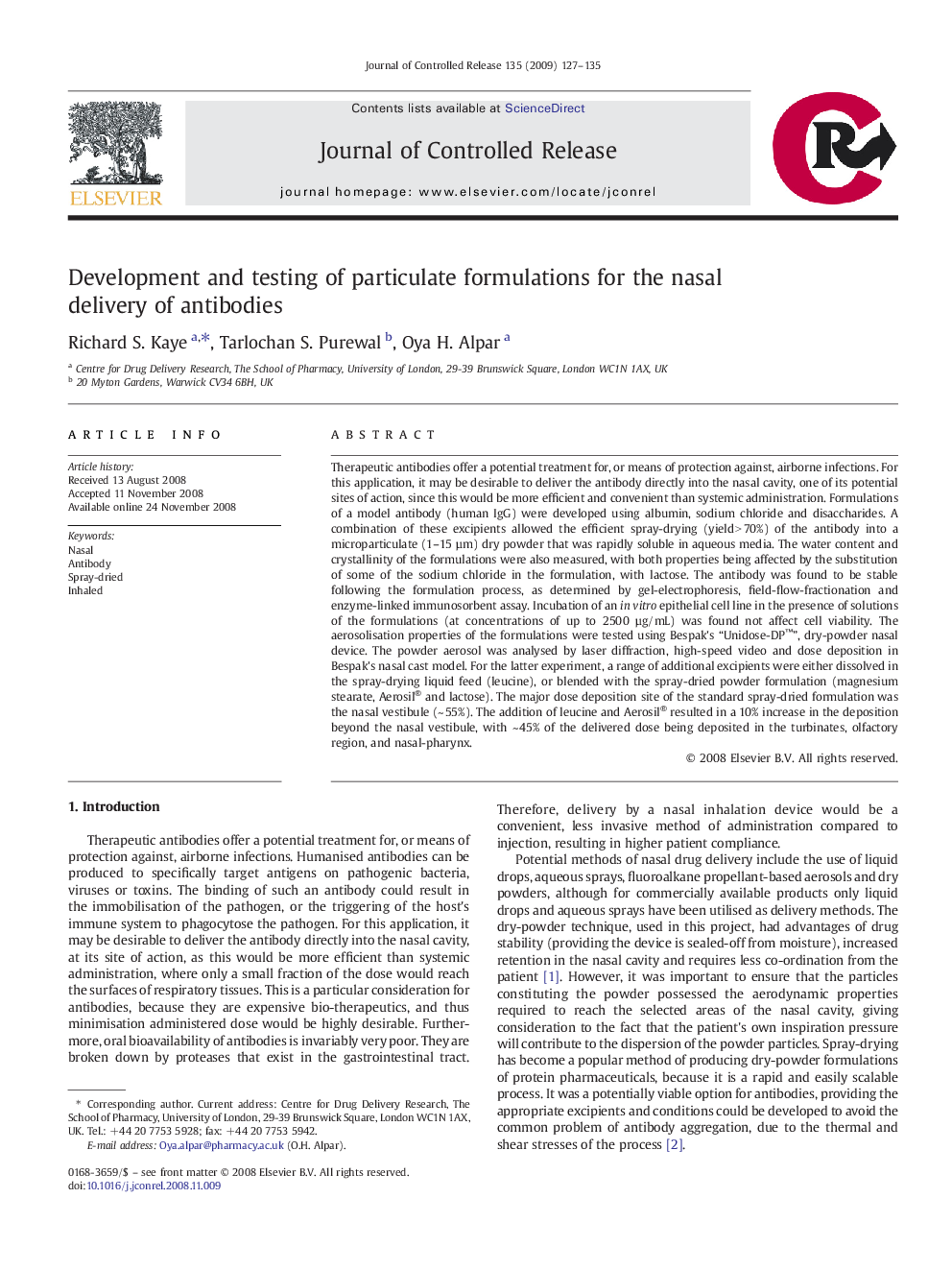| کد مقاله | کد نشریه | سال انتشار | مقاله انگلیسی | نسخه تمام متن |
|---|---|---|---|---|
| 1426434 | 986812 | 2009 | 9 صفحه PDF | دانلود رایگان |

Therapeutic antibodies offer a potential treatment for, or means of protection against, airborne infections. For this application, it may be desirable to deliver the antibody directly into the nasal cavity, one of its potential sites of action, since this would be more efficient and convenient than systemic administration. Formulations of a model antibody (human IgG) were developed using albumin, sodium chloride and disaccharides. A combination of these excipients allowed the efficient spray-drying (yield > 70%) of the antibody into a microparticulate (1–15 µm) dry powder that was rapidly soluble in aqueous media. The water content and crystallinity of the formulations were also measured, with both properties being affected by the substitution of some of the sodium chloride in the formulation, with lactose. The antibody was found to be stable following the formulation process, as determined by gel-electrophoresis, field-flow-fractionation and enzyme-linked immunosorbent assay. Incubation of an in vitro epithelial cell line in the presence of solutions of the formulations (at concentrations of up to 2500 µg/mL) was found not affect cell viability. The aerosolisation properties of the formulations were tested using Bespak's “Unidose-DP™”, dry-powder nasal device. The powder aerosol was analysed by laser diffraction, high-speed video and dose deposition in Bespak's nasal cast model. For the latter experiment, a range of additional excipients were either dissolved in the spray-drying liquid feed (leucine), or blended with the spray-dried powder formulation (magnesium stearate, Aerosil® and lactose). The major dose deposition site of the standard spray-dried formulation was the nasal vestibule (~ 55%). The addition of leucine and Aerosil® resulted in a 10% increase in the deposition beyond the nasal vestibule, with ~ 45% of the delivered dose being deposited in the turbinates, olfactory region, and nasal-pharynx.
Figure optionsDownload as PowerPoint slide
Journal: Journal of Controlled Release - Volume 135, Issue 2, 17 April 2009, Pages 127–135